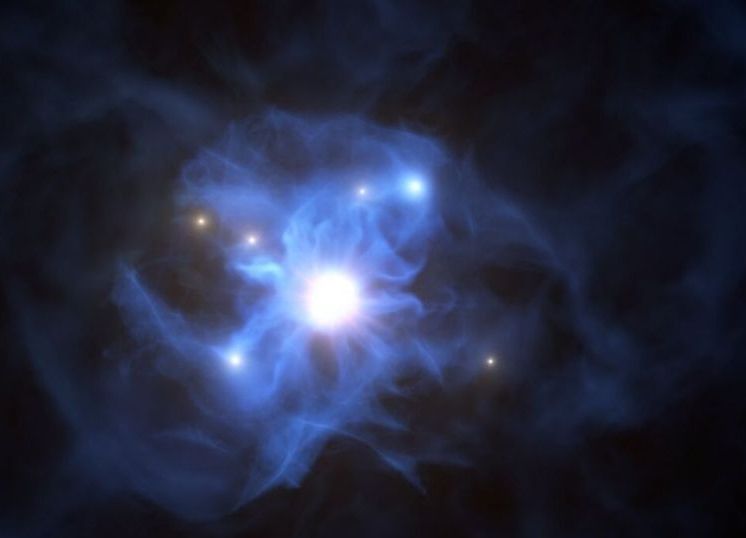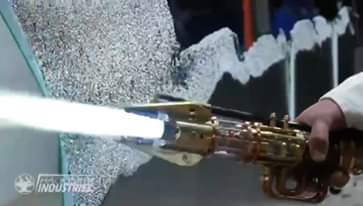Scientists have spotted six galaxies that appear trapped in orbit around a supermassive black hole that astronomers are seeing as it was when the universe was less than a billion years old.


It looks like micro-plastics are now found inside human bodies.
Researchers found evidence of plastic contamination in tissue samples taken from the lungs, liver, spleen and kidneys of donated human cadavers.
“We have detected these chemicals of plastics in every single organ that we have investigated,” said senior researcher Rolf Halden, director of the Arizona State University (ASU) Biodesign Center for Environmental Health Engineering.
There’s long been concern that the chemicals in plastics could have a wide range of health effects ranging from diabetes and obesity to sexual dysfunction and infertility.
Hang bugs—when software gets stuck, but doesn’t crash—can frustrate both users and programmers, taking weeks for companies to identify and fix. Now researchers from North Carolina State University have developed software that can spot and fix the problems in seconds.
“Many of us have experience with hang bugs—think of a time when you were on website and the wheel just kept spinning and spinning,” says Helen Gu, co-author of a paper on the work and a professor of computer science at NC State. “Because these bugs don’t crash the program, they’re hard to detect. But they can frustrate or drive away customers and hurt a company’s bottom line.”
With that in mind, Gu and her collaborators developed an automated program, called HangFix, that can detect hang bugs, diagnose the relevant problem, and apply a patch that corrects the root cause of the error.

Recently, researchers from the Institute of Intelligent Machines developed a new wavelength selection algorithm based on combined moving window (CMW) and variable dimension particle swarm optimization (VDPSO) algorithm.
CMW retained the advantages of the moving window algorithm, and different windows could overlap each other to realize automatic optimization of spectral interval width and number. VDPSO algorithms improved the traditional particle swarm optimization (PSO) algorithm.
This new algorithm, which is called VDPSO-CMW, could search the data space in different dimensions, and reduce the risk of limited local extrema and over fitting.

A team of researchers affiliated with a host of institutions in Korea and one in Estonia has found a way to use math to study paintings to learn more about the evolution of art history in the western world. In their paper published in Proceedings of the National Academy of Sciences, the group describes how they scanned thousands of paintings and then used mathematical algorithms to find commonalities between them over time.
Beauty, as the saying goes, is in the eye of the beholder—and so it is also with art. Two people looking at the same painting can walk away with vastly different impressions. But art also serves, the researchers contend, as a barometer for visualizing the emotional tone of a given society. This suggests that the study of art history can serve as a channel of sorts—illuminating societal trends over time. The researchers further note that to date, most studies of art history have been qualitatively based, which has led to interpretive results. To overcome such bias, the researchers with this new effort looked to mathematics to see if it might be useful in uncovering features of paintings that have been overlooked by human scholars.
The work involved digitally scanning 14,912 paintings—all of which (except for two) were painted by Western artists. The data for each of the paintings was then sent through a mathematical algorithm that drew partitions on the digital images based on contrasting colors. The researchers ran the algorithm on each painting multiple times, each time creating more partitions. As an example, the first run of the algorithm might have simply created two partitions on a painting—everything on land, and everything in the sky. The second might have split the land into buildings in one partition and farmland in another.
NASA is about to grab its first-ever taste of an asteroid. On 20 October, some 334 million kilometres from Earth, the agency’s OSIRIS-REx spacecraft will approach a dark-coloured, diamond-shaped asteroid named Bennu, with the aim of touching its surface for a few seconds — long enough to hoover up a collection of dust and pebbles. If successful, the spacecraft will then fly this carbon-rich rubble back to Earth, where scientists can probe it for clues to the history of the Solar System.
OSIRIS-REx spacecraft is about to execute a nail-biting manoeuvre to scoop up rock samples from the asteroid Bennu and send them back to Earth. OSIRIS-REx spacecraft is about to execute a nail-biting manoeuvre to scoop up rock samples and send them back to Earth.


It’s unbelievable all that’s going on at the moment in astronomy” — DER SPIEGEL — international.
DER SPIEGEL: Wherever black holes are discussed, that picture is shown. And you are now telling us that we don’t really even know what it is?
Genzel: Exactly. It could be that we are looking at the shadow of a black hole, as it is commonly portrayed. But it could also be the outer wall of a jet that is coming directly at us at the speed of light. To know for sure, we need additional measurements. But we have a problem at the moment: the corona pandemic. Most Earth-based telescopes have been switched off.
DER SPIEGEL: Tell us a little bit about your research. What is the importance of a black hole at the center of the Milky Way?

Circa 2014
A breakthrough new battery technology could finally deliver the sort of across-the-board improvements many industries have needed for a long, long time now.